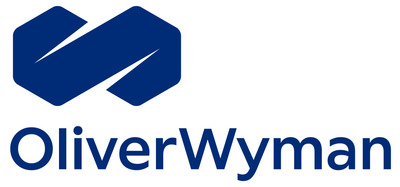Global Commercial Aircraft Fleet Slated to Grow 28% by 2034 According to Oliver Wyman
- None.
- None.
"Having clawed its way back from COVID, the industry is finally out of recovery mode and on a growth trajectory," said Anthony DiNota, Vice President of Oliver Wyman's CAVOK. "But the pandemic is having a lasting impact. Before COVID the fleet was slated to reach 39,000 aircraft by 2030. However, this won't happen until 2036, with COVID wiping out six years of growth."
Meanwhile, the maintenance, repair, and overhaul (MRO) sector will grow almost
Key findings of the forecast include:
- Growth rate – The industry has now matched its pre-COVID peak, but growth moving forward will be slower. The fleet will expand
2.5% annually (compound annual growth rate) versus the2.9% projected in last year's 2023-2033 forecast. Narrowbodies are expected to see a steady increase in their share of the fleet, rising from61% in 2024 to63% in 2034. This growth is driven by the resurgence of domestic air travel worldwide, which is projected to surpass the pre-COVID peak. India leads in growth – For the first time ever, India will overtakeChina as the industry's growth leader, with the Indian fleet expected to expand almost13% over the first five years of the forecast period and nearly10% for the entire 10 years. Currently at about 600 planes, the Indian fleet will be 2.5 times the size it is today by 2034.- MRO – The aviation's global aftermarket, known as MRO, keeps aircraft flying. It is expected to expand to
$124 billion 2.3% . - Pilot shortage – The industry is seeing relief from the pilot shortage as salaries for all pilots rise and more candidates seek their airline transport pilot certification. In
North America , where the shortage has been the most acute, the gap between supply and demand will peak in 2026 at 24,000. The shortage will continue to put pressure on airlines – particularly regional airlines and ultra low-cost carriers inthe United States – for the next 10 years. - Climate change – There remains uncertainty over how climate change will affect the industry's ability to grow. Already, some countries in the European Union have eliminated short-haul flights, and EU Sustainable Aviation Fuel (SAF) mandates will go into effect in 2025 when
2% of all fuel at European airports will have to be SAF. With the capability to cut emissions50% and80% , SAF can have a significant impact. While the technology exists and some airlines are already utilizing SAF, the current supply is insufficient to support the necessary growth in consumption required to achieve substantial reductions in aviation emissions.
"The aviation industry is grappling with a multitude of challenges, including a fragile manufacturing supply chain, labor shortages, and higher capital costs. These obstacles are further complicated by geopolitical tensions and the pressing issue of climate change. The industry needs to position itself for sustainable growth while addressing the challenges it currently faces," said Brian Prentice, Partner, Oliver Wyman, and co-author of the report.
About the Global Fleet and MRO Market Forecast 2024-2034
The 2024-2034 edition of Oliver Wyman's Global Fleet and MRO Market Forecast represents its more than two-decade commitment to the understanding and assessment of the commercial airline transport fleet and the associated MRO market outlook. The commentary is the go-to resource of aviation executives—whether a manufacturer, operator, or aftermarket provider, as well as for those with financial interests in the sector through private equity firms and investment banks. The report provides a 10-year outlook for the commercial airline transport fleet and the associated maintenance, repair, and overhaul (MRO) market. This annually produced report, along with our Airline Economic Analysis, are staple resources to executives working in aerospace manufacturing, airlines, MRO, and financing of the sector through private equity firms and investment banks.
About Oliver Wyman
Oliver Wyman is a global leader in management consulting. With offices in more than 70 cities across 30 countries, Oliver Wyman combines deep industry knowledge with specialized expertise in strategy, operations, risk management, and organization transformation. The firm has 7,000 professionals around the world who work with clients to optimize their business, improve their operations and risk profile, and accelerate their organizational performance to seize the most attractive opportunities. Oliver Wyman is a business of Marsh McLennan [NYSE: MMC]. For more information, visit www.oliverwyman.com. Follow Oliver Wyman on LinkedIn and X.
![]() View original content to download multimedia:https://www.prnewswire.com/news-releases/global-commercial-aircraft-fleet-slated-to-grow-28-by-2034-according-to-oliver-wyman-302074235.html
View original content to download multimedia:https://www.prnewswire.com/news-releases/global-commercial-aircraft-fleet-slated-to-grow-28-by-2034-according-to-oliver-wyman-302074235.html
SOURCE Oliver Wyman








